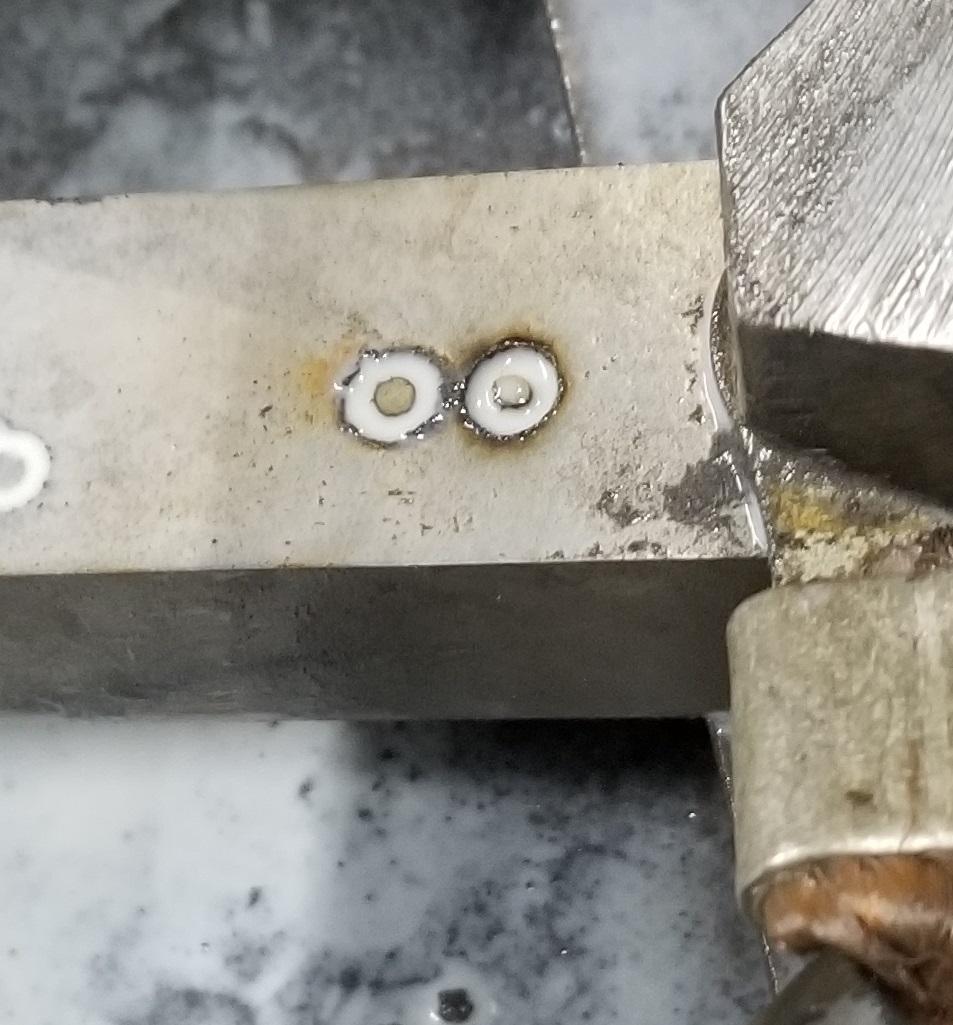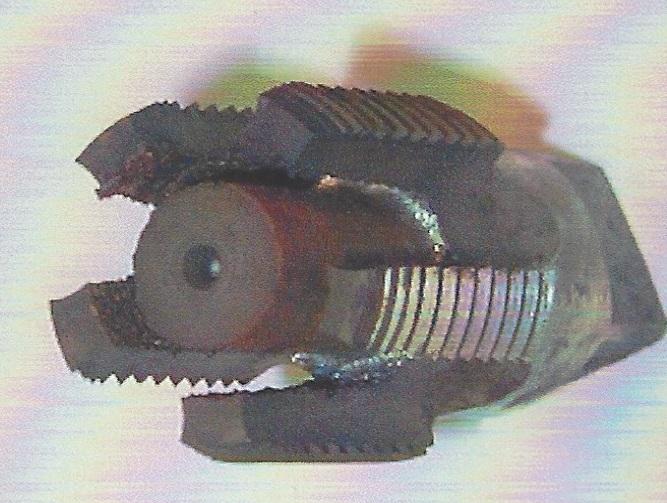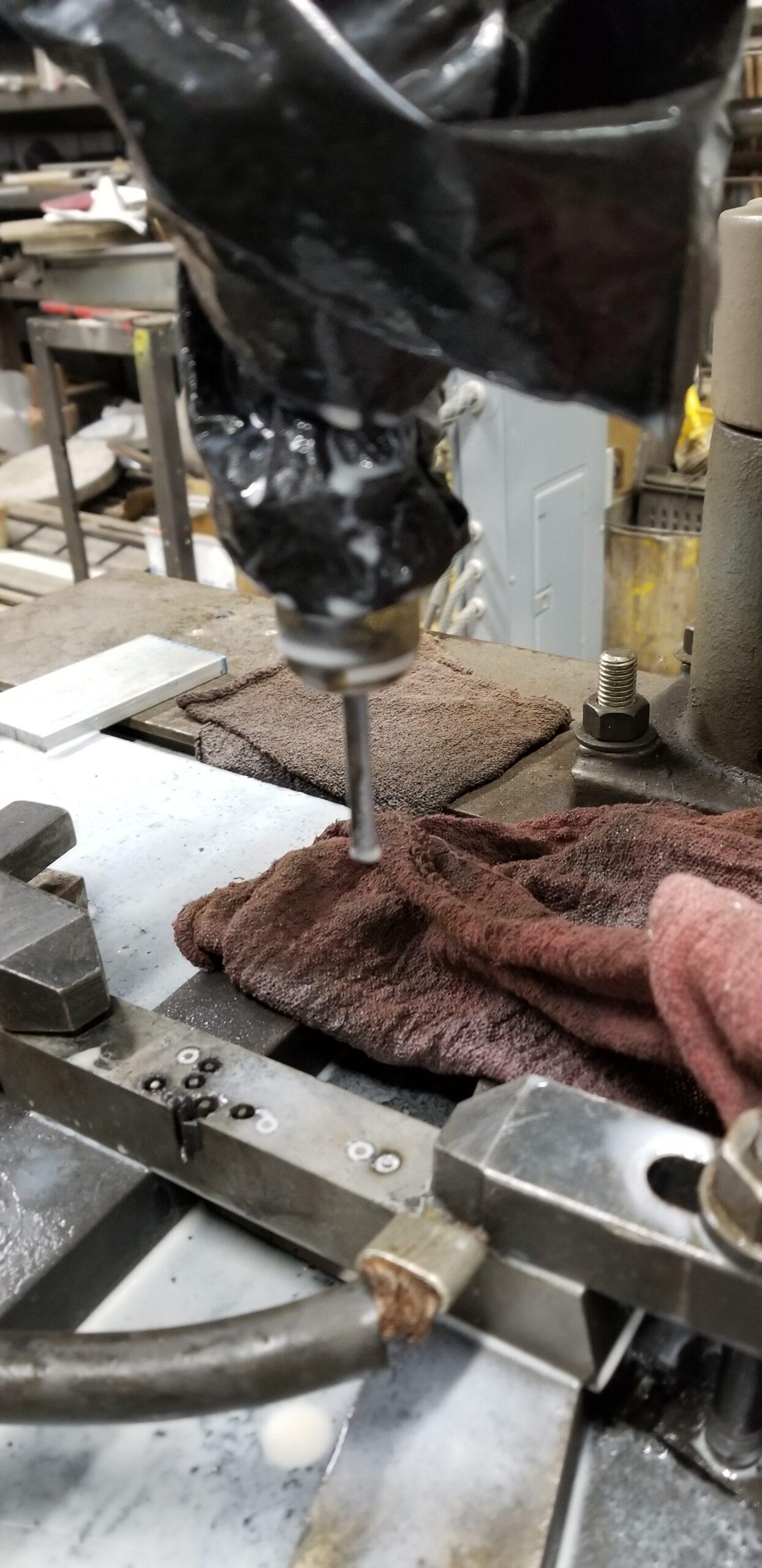Can you Remove Tiny taps with an Electro Arc machine?
You can use Electro Arc’s IQ precision disintegrating head to remove taps as small as #0. If you are a watchmaker you may have broken tiny taps that you are not sure how to remove. You can use a Electro Arc metal disintegrator equipped with the IQ head such as our model 2-SEQ or 2-SQT. You will want to special order small electrodes for your tiny tap sizes. You will also need a pin vice since the smallest electrodes that we make and sell are size .040.


The model 2-SEQ features the power supply and coolant tank/system built into a cabinet on wheels. The largest power supply available will be the 20 kva-rated machine, as is the case with all of our machines. This allows you to remove taps up to 2″ in diameter in a single pass. You can use it to remove bolts up to 1 1/4″ in diameter in a single pass. If you are not removing larger size taps, you can choose to step this down to our 10 KVA or 15 KVA option:

This machine includes our heavy-duty precision disintegrating head. This head allows you to disintegrate in small and large diameters. You can use the magnetic-based fixture that the head is mounted in on any ferrous surface. The model 2-SEQT and 2-SQT feature the auto-feed system, allowing you to run the machine hands-free. You have up to 9” of uninterrupted feed for hands-free operation. Feed rate potentiometer with two selectable speed ranges for precise control. Adjustable automatic shutoff, and auto-stop capability. Plug-in integrated circuit board for serviceability. The manual spring-loaded feed is standard on all machines and assists you in feeding the disintegrator head in a continuous movement. Use the depth stop and automatic shut-off features to concentrate on the disintegration progress, and take manual control with ou simple lever at any time! Use the depth gauge with adjustable depth stop and limit switch to set your machine for automatic shutoff at your desired depth. This helps you avoid damage to parts that do not have through holes.

The IQ precision head is available in full and short sizes for use with our fixtures.


Electro Arc's Model 2-SEQT
Electro Arc’s Model 2-SEQT features the IQ disintegrating head and also offers you the convenience of our smallest work surface, with a 19 X 19″ tabletop. You also have the convenience of the cross-arm structure. While the 2-SQT fixture offers versatility, the tabletop models offer a dedicated workspace. This machine is also easy to move around and has a small profile. You can use the IQ disintegrating head for disintegrating small taps weather it is on a portable model or a table top model.























